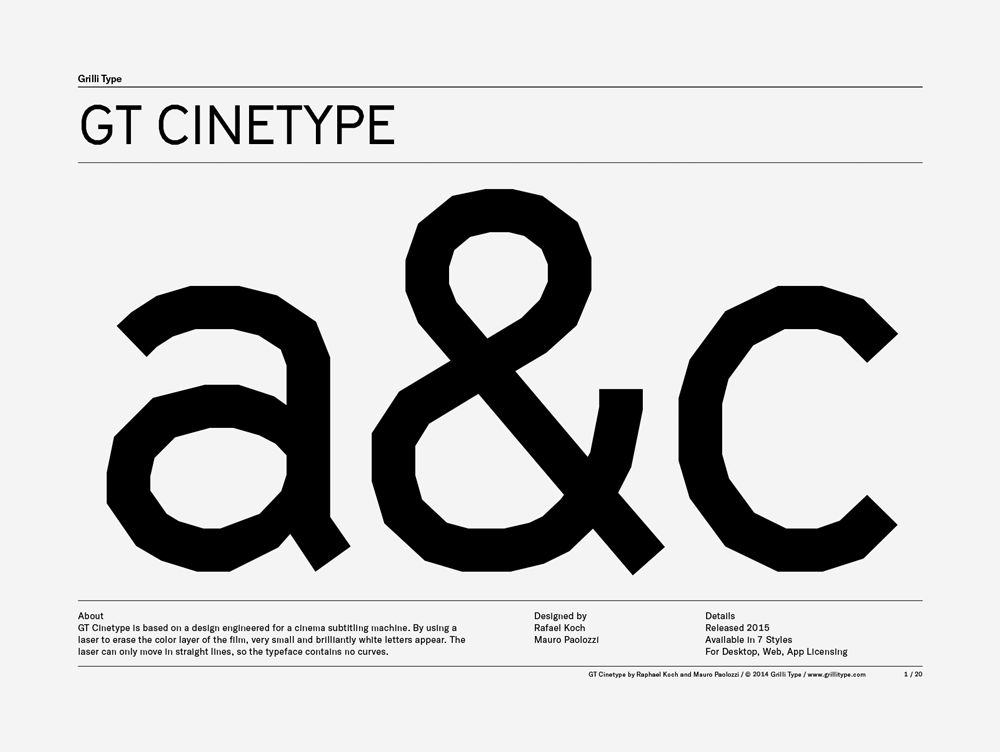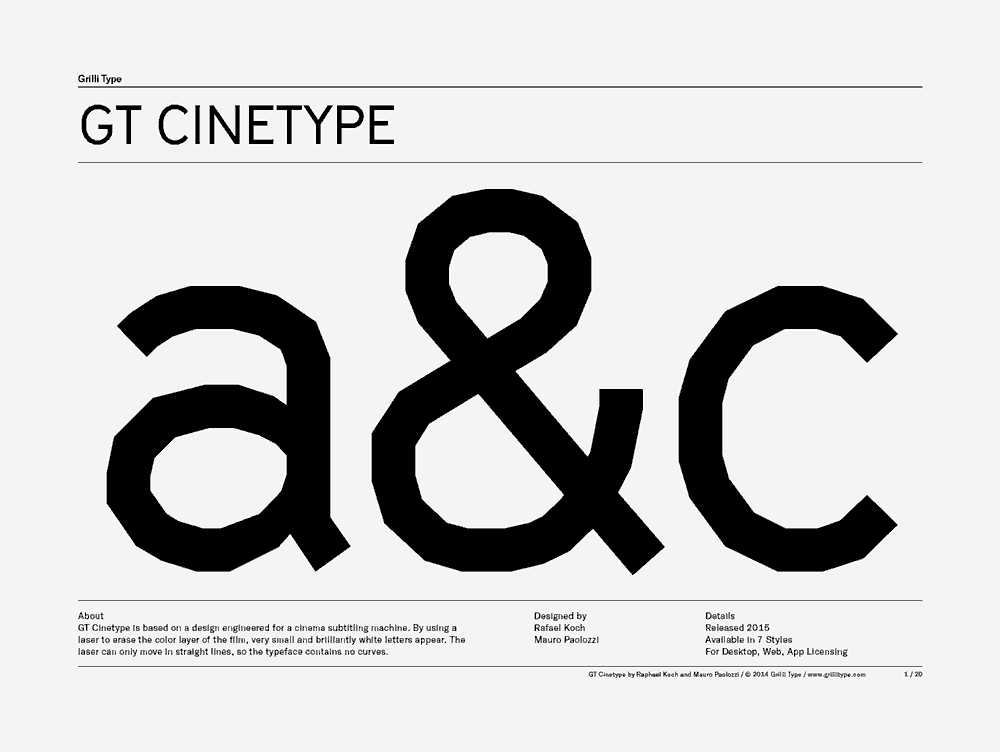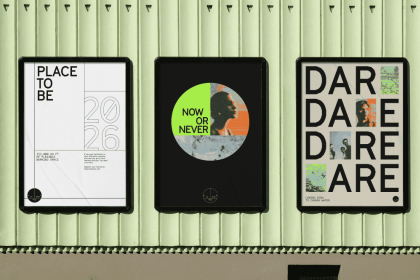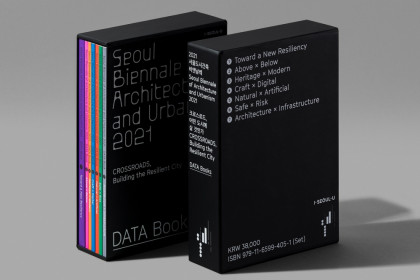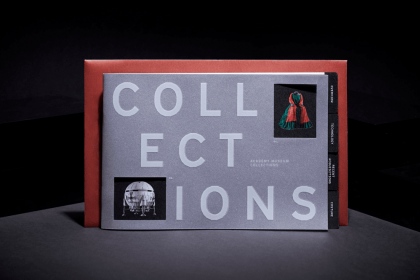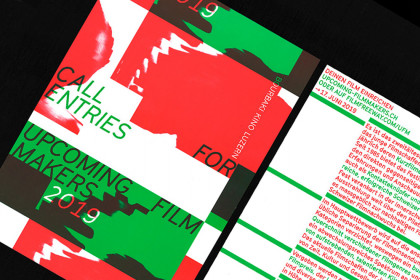GT Cinetype
Family overview
- Light Italic
- Regular Italic
- Bold Italic
- Mono
- LightLord of the Rings 2001 by Peter Jackson with Elijah Wood, Ian McKellen, Orlando Bloom
- Light ItalicDeep Throat 1972 by Jerry Gerard with Harry Reems, Linda Lovelace, Dolly Sharp
- RegularMad Max 2: The Road 1981 by George Miller with Mel Gibson, Bruce Spence, Michael Preston
- Regular ItalicPumping Iron 1977 by George Butler with Arnold Schwarzenegger, Lou Ferrigno, Matty Ferrigno
- BoldTrainspotting 1996 by Danny Boyle with Ewan McGregor, Ewen Bremner, Jonny Lee Miller
- Bold ItalicDas Boot 1981 by Wolfgang Petersen with Jürgen Prochnow, Herbert Grönemeyer, Klaus Wennemann
- Mono2001: A Space Odyssey 1986 by Stanley Kubrick with Keir Dullea, Gary Lockwood, William Sylvester
- Settings
Typeface information
GT Cinetype is based on a design engineered for a cinema subtitling machine. By using a laser to erase the color layer of the film, very small and brilliantly white letters appear. The laser can only move in straight lines, so the typeface contains no curves.
Typeface features
OpenType features enable smart typography. You can use these features in most Desktop applications, on the web, and in your mobile apps. Each typeface contains different features. Below are the most important features included in GT Cinetype’s fonts:
- CASE
- Case sensitive forms
(ROBOCOP)
- ONUM
- Oldstyle figures
10.03.1985
Typeface Minisite
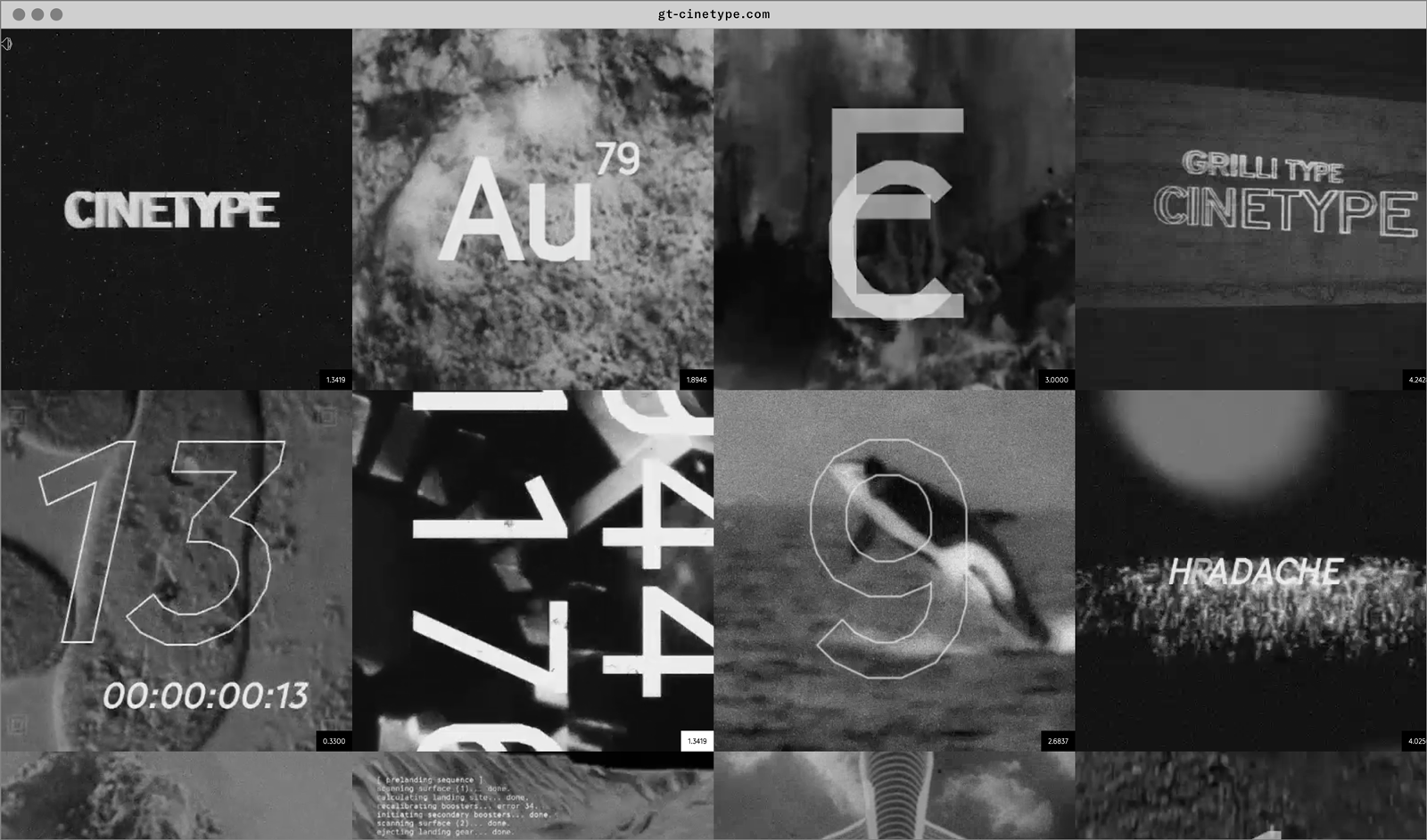
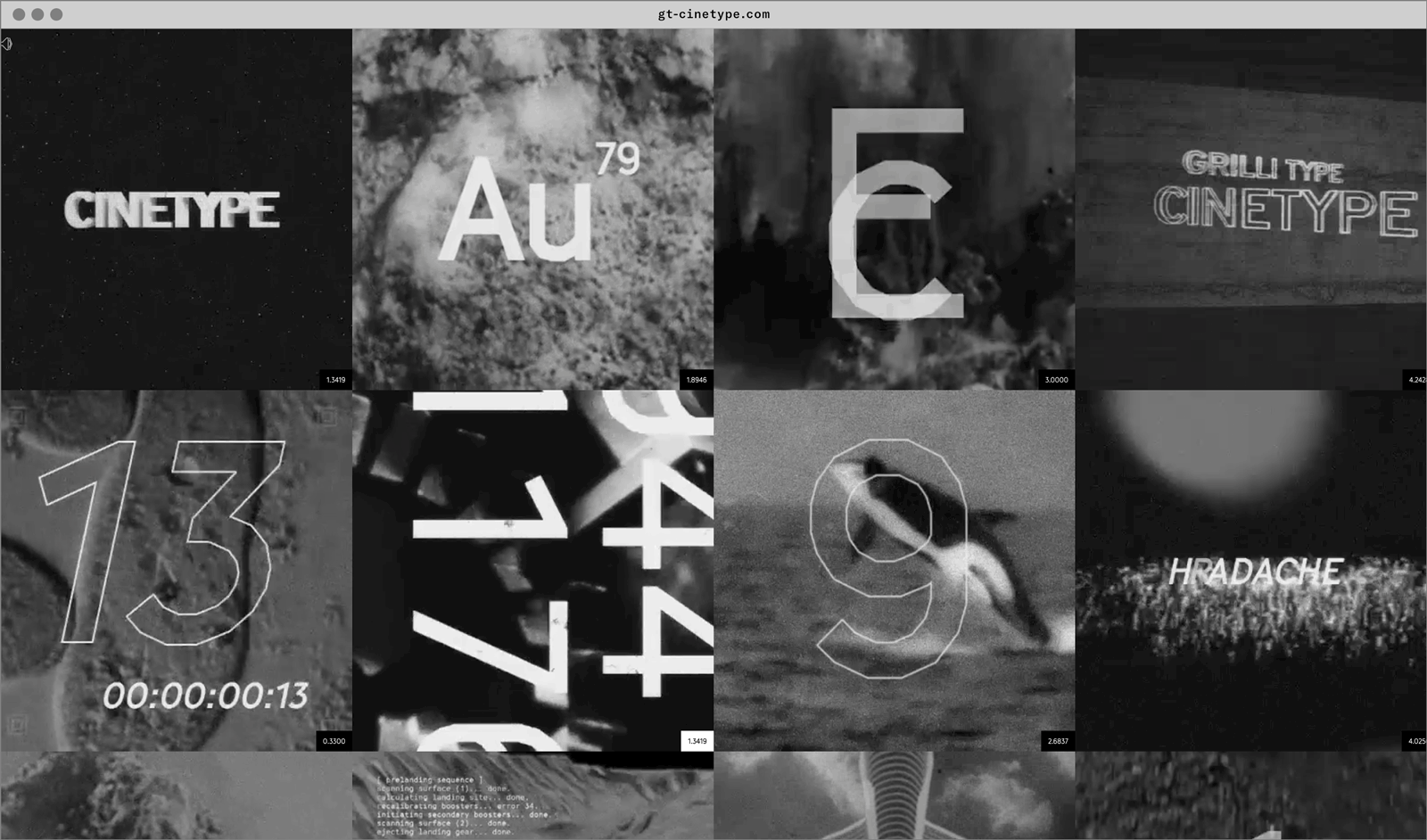
- Visit the GT Cinetype minisite to discover more about the typeface family’s history and design concept.
GT Cinetype in use
